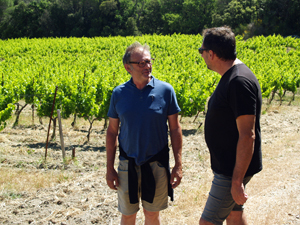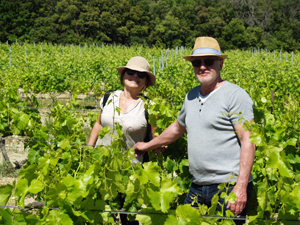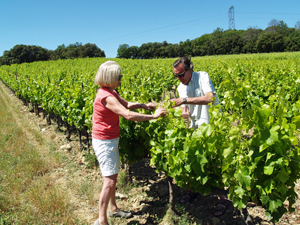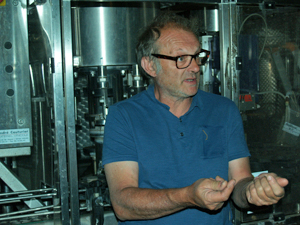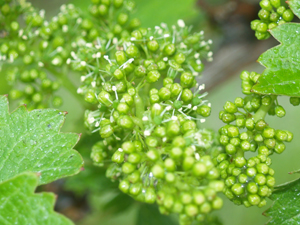Early June is a critical time in the vineyard as we were to find out during the Gourmet Odyssey
Discovery Experience Day at Domaine de la Guicharde in the southern Côtes du Rhône region. We joined the winemakers, Arnaud and David, to learn first-hand about the care and effort that is needed to nurture the vines to enable them to produce the best quality grapes, and to understand the principals and challenges of organic and biodynamic wine-making.
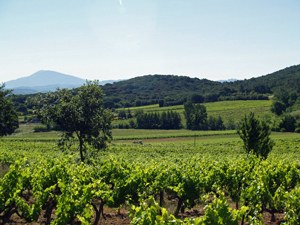
After the introductions, we walked past the olive grove and up into the vineyards. From the top of the hill, Arnaud told us about the unique terroir of the Massif d’Uchaux, the land having never been covered by the sea which brings a freshness to the wines not usually found in southern Côtes du Rhône wines.
Arnaud and David explained the work that has been undertaken so far to prepare the vines for this year’s campaign, showing us the pruning methods used, the need to de-bud the vines, and how the soil is tilled to remove the grass and weeds.
We then continued our walk into the next vineyard on top of the hill. Arnaud pointed out the two different grape varietals grown here. On the left, the Syrah vines, and on the right Grenache. The leaves of the Syrah were more silvery and were slightly furry on the underside compared to the more lush green and smoothness of the Grenache.
The plot of Grenache is where our adopted vines are to be found, and so we took a few minutes to visit our micro plot of vines, and encourage them to produce a great harvest this year!
A wonderfully delicate fragrance filled the air. On closer inspection, we could see that there were lots of tiny white flowers on each of the vines. This happens for a short period each year, lasting just a week, and is one of the most critical periods in determining the quantity of grapes that we will pick at harvest time. Vines are self-pollinating plants, the pollen falling directly from the anthers of the stamen to the stigma. The weather is crucial for this to happen properly. If it is rainy, then the pollen sticks and cannot fertilize the ovaries, and if there is too much wind, pollen is carried away from the vines. Fortunately, the conditions were perfect the day that we were at the winery. Sun, a little wind, and not too hot.
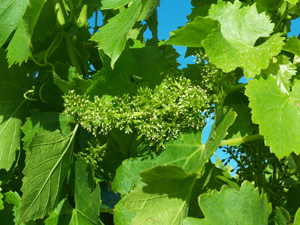
The vines grow very quickly at this time of year, and there had been around 30-50cm of growth from the last time we were at the winery a month ago. To help maintain order in the vineyard and to help the vines support the weight of the foliage and grapes to come, we train the vines using a trellis system. This was our task for the day!
After receiving a quick lesson in how to train the vines, we split into twos and raised the training wires, being careful to not damage the flowers, and ensuring that the branches were supported between the wires. To keep the wires in place, we used a biodegradable clip.
By this stage we had built up an appetite and a thirst, so we headed back to the winery and the shade of the courtyard. As an aperitif we tasted Le 18 rosé and Autour de la Chapelle white wines, and over the delicious lunch prepared by a local restaurant, we tasted some of the red wines, the 2016 Pur Rouge Côtes du Rhône, the 2015 Terroir du Miocène and the 2018 Genest Massif d’Uchaux wines.
After lunch we headed back into the vineyard to learn about the work that will be carried out between now and the harvest. We also took the time to listen to Arnaud explain how the vineyards are managed organically and biodynamically, a topic which generated lots of questions and gave rise to much reflection as to how it is possible to work in harmony with nature.
The day finished with a quick tour of the vinification hall to see where the wine is made and aged. We’ll be spending much more time here when we come back for the harvest in September, and during the Vinification Experience Days next year.

